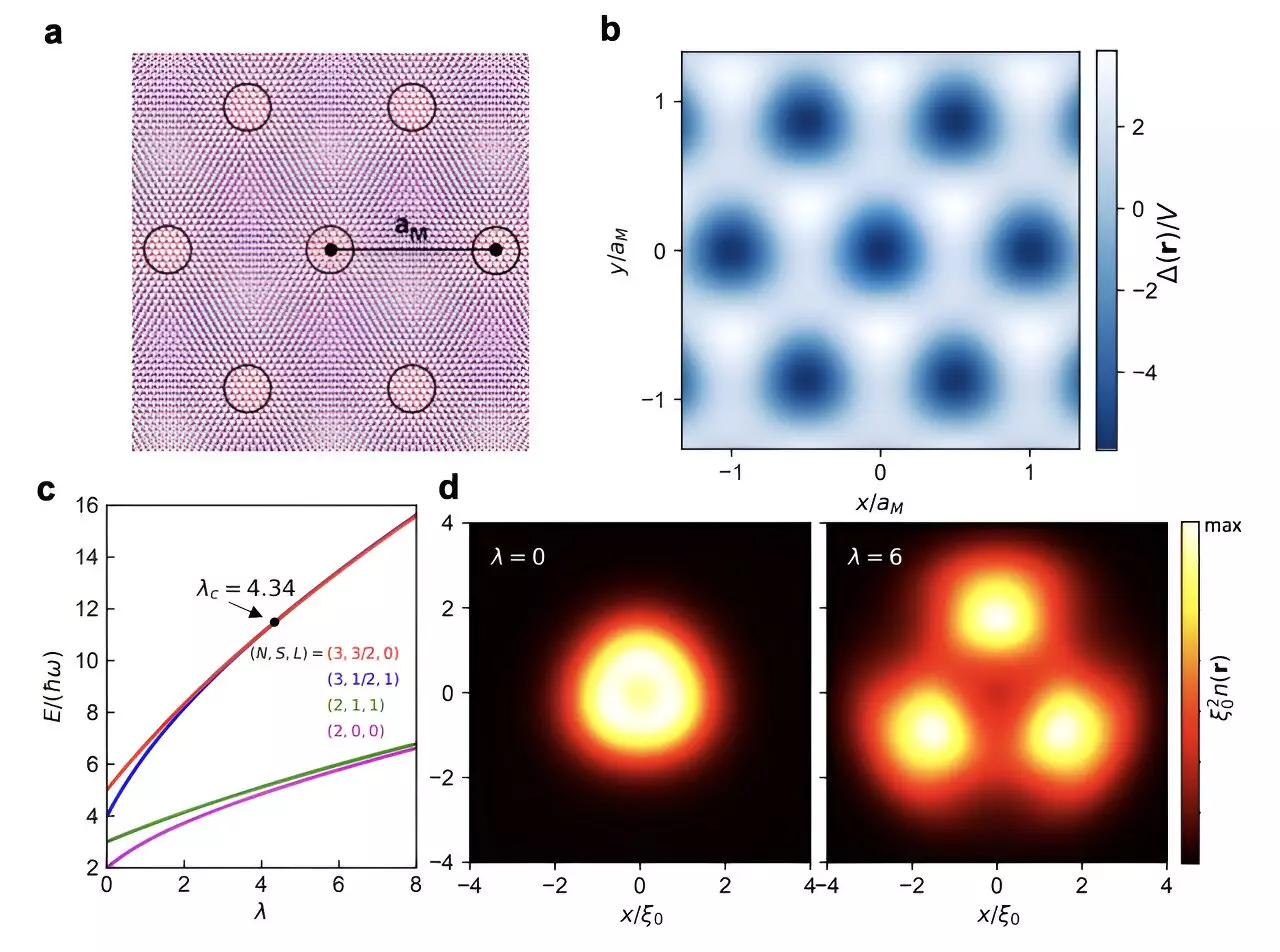Semiconductor moiré superlattices, composed of artificial atom arrays arranged in a moiré configuration, have attracted significant attention due to their tunability and strong electron interactions. Recently, researchers at Massachusetts Institute of Technology (MIT) conducted a study to further investigate these materials and their underlying physics. The study, published in Physical Review Letters, presents a new theoretical framework for the analysis of large-period moiré superlattices, which feature weakly interacting electrons residing in different potential wells. This groundbreaking research opens up new possibilities for studying correlated electron states and quantum physics phenomena.
One of the primary advantages of semiconductor moiré superlattices is their ease of manipulation in experimental settings. Physicists can control the density of electrons within these structures, thereby altering the properties of their many-electron ground state. While previous studies primarily focused on systems containing one or less than one electron per moiré unit cell, the MIT researchers sought to explore the multi-electron regime, looking for any novel behavior or phenomena that may emerge.
Challenges in Predicting Multi-Electron Behavior
Predicting the behavior of multi-electron materials presents a considerable challenge due to the presence of various energy scales that compete with one another. Kinetic energy favors an electron liquid, while interaction and potential energy favor an electron solid. The unique aspect of moiré materials lies in their tunability, allowing researchers to vary the moiré period and adjust the relative strength of these energy scales accordingly. Leveraging this characteristic, the MIT team developed a theoretical framework to study large-period moiré systems with weakly coupled electrons residing in different potential wells.
Unveiling New Physics in Moiré Superlattices
The theoretical framework devised by the MIT researchers focuses on understanding the behavior of individual atoms within the moiré superlattice. Surprisingly, this relatively simple approach offers valuable insights into various quantum physics phenomena. By utilizing their framework, the researchers uncovered intriguing physics that can manifest in multi-electron semiconductor-based moiré superlattices. For instance, at a filling factor of n=3 (where each moiré atom contains three electrons), Coulomb interactions were observed to lead to the formation of a “Wigner molecule.” Moreover, when the size of these Wigner molecules is comparable to the moiré period, they can arrange into an emergent Kagome lattice structure. These self-organized electron configurations presented in the MIT study provide ample opportunities for further exploration and can serve as inspiration for physicists studying charge order and quantum magnetism in unconventional materials.
Predictions Confirmed Experimentally
Of particular significance is the researchers’ prediction and subsequent experimental confirmation of the existence of Wigner solids at special filling factors. The balance between the energy scales within the moiré superlattice causes the electrons to self-organize into striking configurations known as Wigner molecules. This groundbreaking finding validates the theoretical framework developed by the MIT team and adds substantial legitimacy to their research.
In the near term, the MIT researchers plan to focus on studying the quantum phase transition between Wigner electron solids and electron liquids. This phase transition holds the key to understanding the underlying mechanisms that govern the behavior of electrons within moiré superlattices. Additionally, the newfound knowledge and insights gained from this study pave the way for further investigations into correlated electron states and quantum physics phenomena in other material systems.
The MIT study on semiconductor moiré superlattices represents a significant step forward in the exploration of novel physics phenomena. By introducing a new theoretical framework, the researchers have uncovered previously unknown self-organized electron configurations that hold great potential for further study and practical applications. This research opens up exciting possibilities for understanding correlated electron states, quantum magnetism, and charge order in a regime that is distinct from conventional materials. With ongoing developments and advancements in the field, semiconductor moiré superlattices are set to revolutionize our understanding of quantum physics and pave the way for future technological breakthroughs.



Leave a Reply